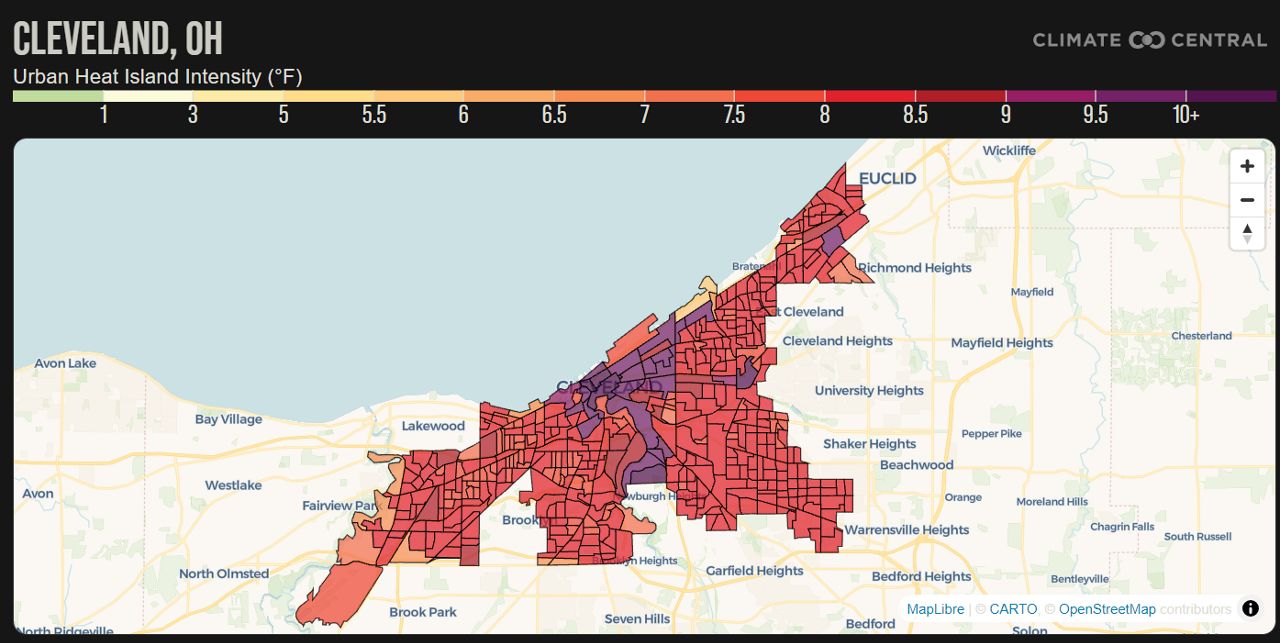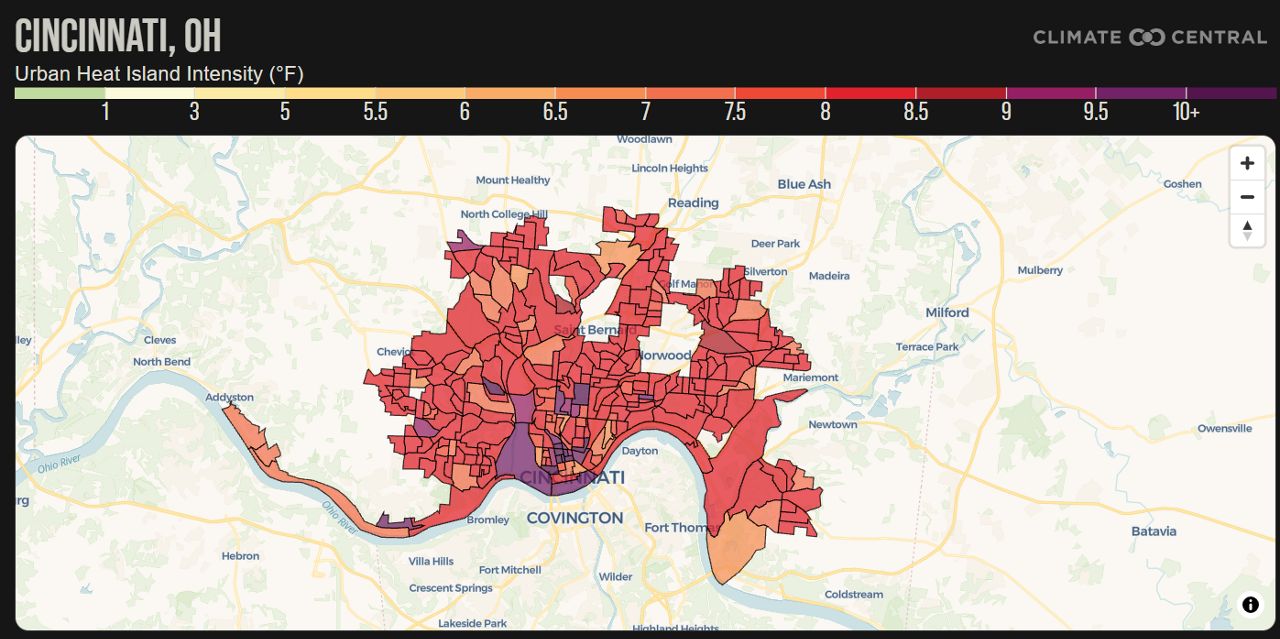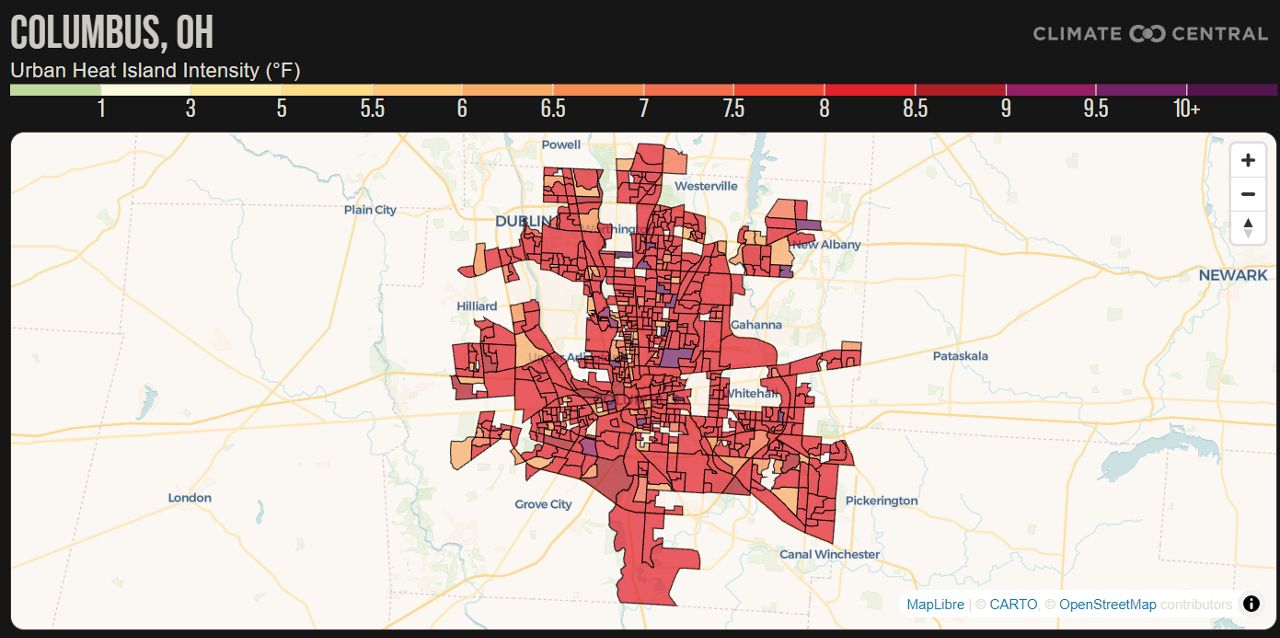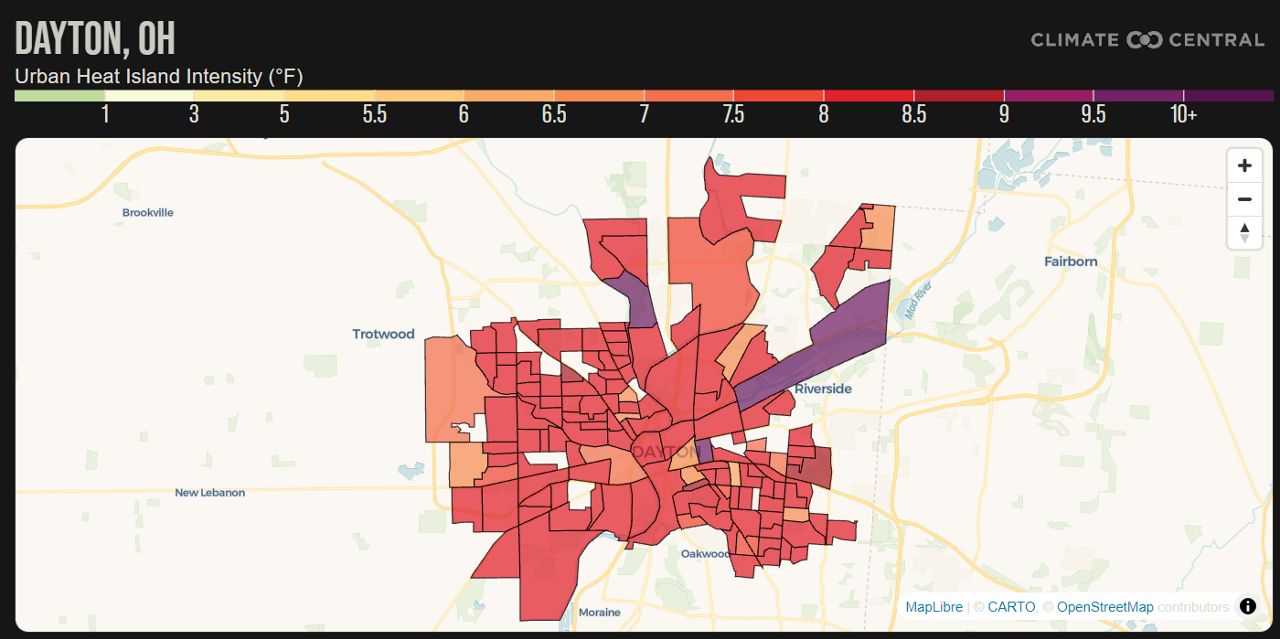OHIO — A group of independent scientists and communicators just released data that shows millions of people are in cities that tend to be hotter than their surrounding areas, and that group includes hundreds of thousands of Ohioans.
Climate Central highlighted 65 cities affected by the "urban heat island effect." Heat islands, according to the U.S. Environmental Protection Agency, are cities that tend to be hotter than others due to structures such as buildings, roads and other infrastructure absorbing and re-emitting the sun’s heat more than natural landscapes would, such as bodies of water and forests.
Climate Central said 80% of the U.S. population lives in cities, and they face higher heat risks. Scientists warned it's only getting worse because of climate change.
"Extreme heat is the deadliest weather-related hazard in the U.S. During extreme heat events, the urban heat island effect can worsen heat stress and related illness for millions, put vulnerable populations at risk, and lead to higher energy bills and strained power grids during spikes in cooling demand," Climate Central wrote in the report.
Here is a breakdown of each Ohio city in the report and the blocks within getting the worst of the heat island effect:
Climate Central said more than 300,000 Cleveland residents live in areas where it tends to be hotter than surrounding areas. On the urban heat island (UHI) index, which ranges from 0 to 10+ degrees on a scale, Cleveland on average is 8.4 degrees warmer than surrounding areas.

For Cincinnati, more than 260,000 residents live in heat islands, and the city is on average 8.14 degrees hotter.

In Columbus, more than 670,000 residents live in heat islands, and the city is on average 7.9 degrees warmer.

For Dayton, more than 116,000 residents live in heat islands, and the city is on average 8 degrees hotter.

The report also made these findings:
- Six cities had at least 1 million people exposed to a UHI index of 8 degrees or higher
- Climate Central said the urban heat burden is "unequally shared, and linked to a history of racially biased housing policy." The group sites an analysis from Columbia University which highlights historically redlined areas tend to have hotter summers than those that weren't redlined.
- A way to reduce heat islands is to plant more trees and install cool roofs and pavements
Read the full report here.



